Intel Updates the NUC at CES 2015 with Broadwell-U
by Ian Cutress on January 12, 2015 12:18 PM EST- Posted in
- Systems
- Intel
- SFF
- Trade Shows
- NUC
- Mini-PC
- CES 2015
- Broadwell-U
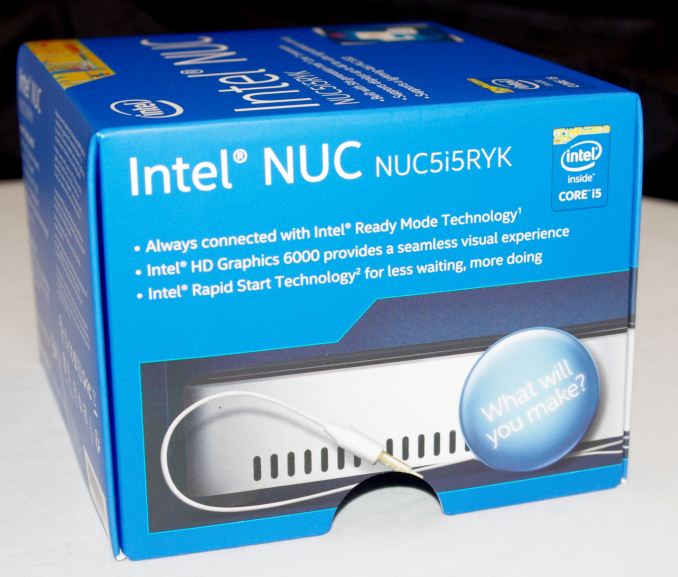
The big topic going in to CES was the launch of Broadwell-U, Intel’s 14 nanometer 5th generation Core products for laptops, mini-PCs and all-in-ones, with rated TDPs of 15W and 28W and the new Generation 8 graphics onboard. Into the mini-PC category falls the NUC form factor, invented by Intel a number of years ago. The NUC, or ‘Next Unit of Computing’, provides a chassis, motherboard, processor and fan with the user or system integrator to add in their own storage and DRAM, all with the aim of building something that can be VESA mounted to many compatible monitors on the market or just run as that small device on the desk. At CES 2015, Intel is updating its NUC range from Haswell-U to Broadwell-U.
15W is not really suitable for fanless without increasing size, so the NUC comes with a fan in the i3, i5 and i7 configurations, supporting up to HD 6000 graphics (48 EUs). Connectivity will come as a gigabit Ethernet port, two USB 3.0 ports, a micro-HDMI and a mini-DisplayPort, offering a full 4K implementation.
The double sided PCB gives space for an M.2 2242, 2260 or 2280 drive, along with a mini-PCIe WiFi card and two modules of memory. Users can add a 2.5-inch to the device through that SATA port as well.
In this i5 model packaging, the dual band dual stream AC-7265 is bundled onboard as a pre-soldered M.2 1216 package, with the module itself offering lower power consumption than the AC-7260 which is what we have seen in the desktop space for the past year.
The unit also gives a fast charging USB 3.0 port in yellow. We asked about USB 3.1 support on future NUCs, but in true Intel style they were not giving anything away. For the NUC team to move into USB 3.1, it would make more sense when the standard moves onto the chipset of the SoC, which might be a couple of generations away.
Also for release is this Bay Trail-T system with Windows on a stick. It directly attaches to a TV or monitor through the HDMI and uses a separate USB cable from the device to the monitor for power. Under the hood is 2GB of DRAM and 32GB of eMMC which equates to a full system in a form factor barely bigger than your thumb.
Our recent Bay Trail coverage with the HP Stream 11 at $199 and the J1800N motherboard puts an expectation of price level for these new systems, especially in terms of expectation of performance against what is possible. With this new device Intel is aiming for the $149 price point, which compared to the HP Stream 11 with a keyboard, screen and Miracast might seem like an average deal for home use, Intel is aiming to market this at the digital signage and the point-of-sale markets.


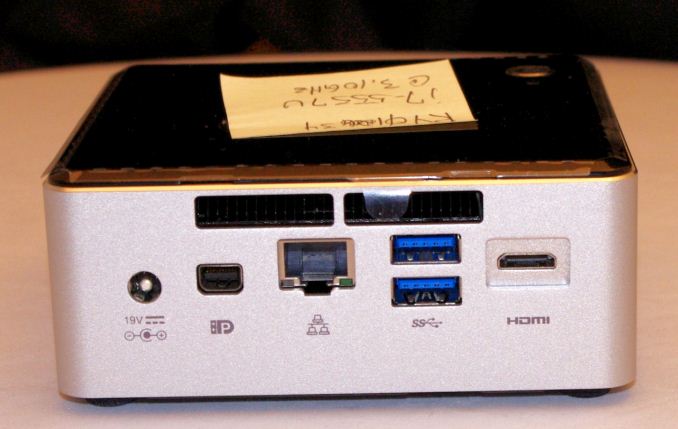
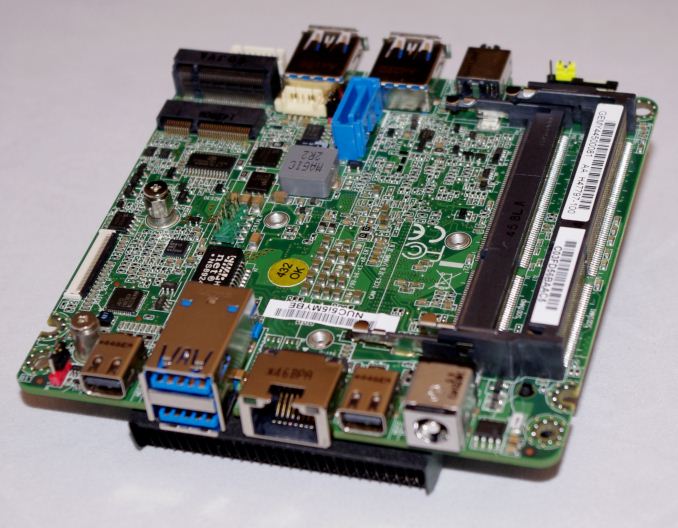
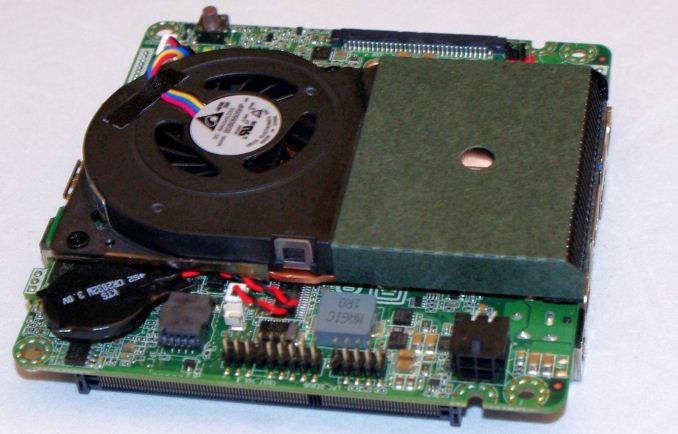
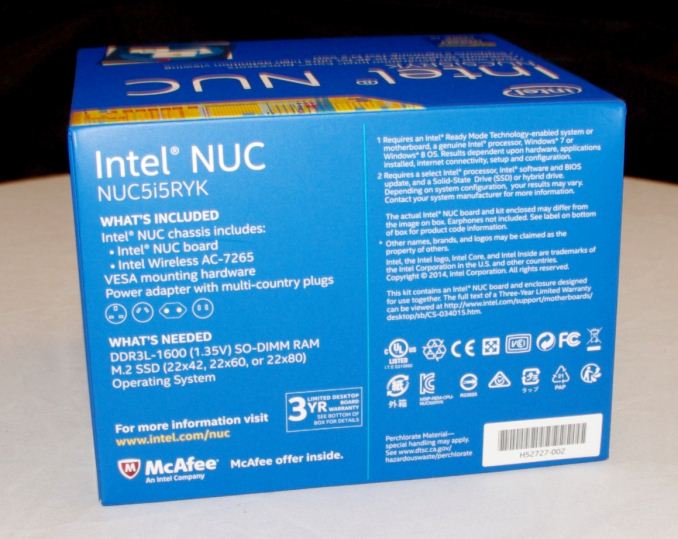
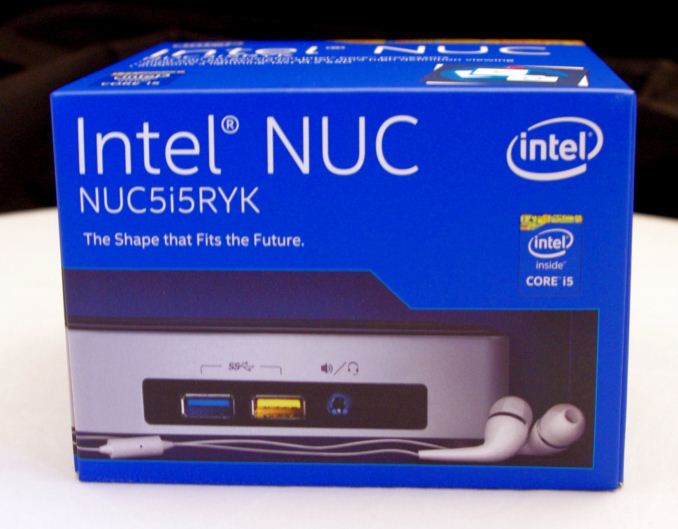
















32 Comments
View All Comments
chizow - Tuesday, January 13, 2015 - link
Yeah we're bitstreaming from within both WMC and VLC from shared networked resources, either the NAS or in some cases my wife will stream from her desktop to the NUC over WiFi. However, we are not using an A/V receiver off the NUC, it just goes straight to the HDTV in the bedroom.Honestly it sounds more like an HDMI handshake issue between the NUC and the AV receiver, like it can't tell what state the TV is in so it just defaults to no compatible audio device on wake. A lot of this goes back to the awful state of EDID on various HDTV devices, and while they can be fixed on the driver side with hacks (Nvidia has done this numerous times), they really shouldn't have to. Is there a setting on your AV receiver that allows HDMI passthrough, or video only?
Also, have you tried manually putting the NUC into S3 sleep with the proper DTS 5.1 settings configured? I know on my X-FI HTHD there was a quirky workaround that required manually sleeping to get the HDMI audio settings to stick.
powerarmour - Monday, January 12, 2015 - link
The bitstreaming issue is a Windows DRM issue, all Intel NUC's bitstream perfectly fine under Linux and OpenELEC etc.Aikouka - Monday, January 12, 2015 - link
What exactly makes it a Windows DRM issue? I have a "normal" i3-3225 HTPC, and it works fine in the same scenario. I have had issues with Windows DRM in the past, but that was an issue with PlayReady requiring an update but failing to update.powerarmour - Monday, January 12, 2015 - link
Because a specific Intel MEI driver is required to negotiate with Windows DRM mechanism before bitstreaming is allowed to function.Flunk - Monday, January 12, 2015 - link
It might be a software issue, Linux support for the NUC isn't so hot. It may not be Intel's fault.powerarmour - Monday, January 12, 2015 - link
Linux support for the NUC's is generally fine, the only major bug I'm aware of is the C6/C7 C-States with BayTrail chipsets and >3.16 kernels.Samus - Monday, January 12, 2015 - link
By far the biggest limitation of NUC is obviously Intel graphics. They've been getting better by leaps and bounds every generation, but when you consider where Intel graphics started (at the way bottom) even leaps and bounds still puts them at the bottom.There really isn't a good solution to this since adding any GPU will increase heat and power consumption. AMD has compelling chips that operate near the TDP of NUC CPU's but their floating point performance is terrible. So the trade-off is CPU power for GPU power...and most people prefer CPU power.
It's too bad NVidia and Intel have such a sour relationship because if NVidia licensed X86, they could have a potential hit on their hands with a CPU+GPU SoC, but considering they're manufacturing-limited to TSMC just like AMD, it probably wouldn't be much better than AMD's option.
Flunk - Monday, January 12, 2015 - link
Not just Intel, they'd need a license to AMD64 (the 64bit extension to x86) as well and well... You know who owns that.azazel1024 - Monday, January 12, 2015 - link
Just keep in mind, the AMD chips that are close to Intel's in TDP, have WORSE graphics, because they are so cut down. It isn't till you get in the 25+w TDP range that AMD has compelling chips. Their 15/17w range seems to preform worse at every measure (CPU, GPU all benchmarks and real use) than Intel chips. Hit 25w or so and the GPUs in the AMD designs just run away with it. Though I can't speak to Broadwell versus AMD's solutions, but Haswell against AMD's solutions, that was the case.chizow - Monday, January 12, 2015 - link
Their driver support still leaves a ton to be desired, and I don't even mean for games. Simple bug for 29/59 refresh rates is still an issue on Intel graphics, they have some video treatments that are enabled by default that results in horrible flickering for any source material that suffers 29/59 refresh rate bug (many TV shows or live TV streams).There was a post some 20ish long and months old with no resolution, no acknowledgement of the bug from an Intel rep that posted on it repeatedly that just said "I will check with engineering to see if they have an update on this". I finally found obscure references on other forums like Silicon Dust and AVS forums that led me to the fix, which again, is really obscure in their menus.
Glad I found the fix, since it was a deal-breaker for me and I wasn't looking forward to having to demand a refund over it from Newegg/Intel since it was a non-refund replacement item at NE.